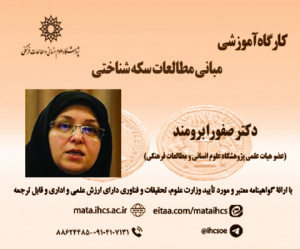زمینه های آمیختگی سبک زندگی اسلامی و ایرانی (مقاله پژوهشی حوزه)
درجه علمی: علمی-پژوهشی (حوزوی)
آرشیو
چکیده
آموزه های هر دین، از جمله اسلام، و فرهنگ هر جامعه بیانگر بایدها و نبایدهایی برای سبک زندگی است. چه عواملی سبب می شوند که سبک زندگی دینی در یک جامعه مثل ایران متنوع و متکثر باشد؟ برای پاسخ به این پرسش از روش استنطاق منابع دینی و اسناد ملی استفاده شده است، یعنی فرایندی پرسشگرایانه از گام های برقراری ارتباط بین نظریه های سبک زندگی و موضوع مقاله؛ نظریه های سبک زندگی پرسشگرند و این مقاله پاسخگو است. هدف این مقاله رسیدن از چیزی معلوم به چیزی نامعلوم است که به آن استنطاق منابع و اسناد اطلاق می شود. نتیجه اینکه سبک زندگی دینی در شرایط زمینه ای خاص و متنوع، متکثر خواهد بود. تفاوت و اختلاف شرایط زمینه ای (شخصیتی، طبیعی و ساختاری) سبب تفاوت سبک های زندگی می شود. آموزه های متافیزیکی، اخلاقی و شریعت اسلامی بُعد اسلامی سبک زندگی اسلامی - ایرانی را برآورده می کند و شرایط زمینه ای (شخصیت، شرایط محیطی و ساختارهای اجتماعی و فرهنگی) بُعد ایرانی آن را.The Contexts of Integration between Islamic and Iranian Lifestyles
The teachings of every religion, including Islam, and the culture of each society outline the dos and don'ts of lifestyle. What factors lead to diversity and multiplicity in religious lifestyles within a society like Iran? To address this question, the method of interrogating religious sources and national documents has been employed—a questioning process that establishes a connection between lifestyle theories and the article's topic. Lifestyle theories pose the questions, and this article provides the answers. This article aims to move from the known to the unknown, a process referred to as interrogating sources and documents. The findings reveal that religious lifestyles, under specific and diverse contextual conditions, will exhibit multiplicity. Differences in contextual conditions (personal, natural, and structural) lead to variations in lifestyles. The metaphysical, ethical, and Sharia-based teachings of Islam fulfill the Islamic dimension of the Islamic-Iranian lifestyle, while the contextual conditions (personality, environmental conditions, and social and cultural structures) constitute its Iranian dimension.







